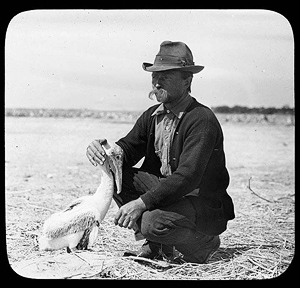| Error processing SSI file |
||
| Error processing SSI file |
||
| Error processing SSI file |
||
Error processing SSI file |
About Marine Protected Areas
Pelican Island National Wildlife Refuge
Paul Kroegel, Pelican Island National Wildlife Refuge. By the end of the 19th century, the increased demand for bird feathers in the fashion industry resulted in the mass slaughter of herons, egrets, spoonbills and pelicans. At one point, plume feathers were worth more than gold! Nowhere was this more evident than on Pelican Island, where thousands of brown pelicans and other water birds roost and nest. The massacre of these beautiful creatures seemed endless. Along came Paul Kroegel, an immigrant who arrived in Sebastian, Florida in 1881 to begin a homestead on the West bank of the Indian River Lagoon. Paul didn't know it yet, but he would soon become the first person interested in protecting the island's birds. Paul enjoyed looking out at Pelican Island and watching all of the birds, but knew they would not last long if the slaughter was allowed to continue. Without state or federal laws to protect the birds, Paul decided to take matters into his own hands. He began to sail out to Pelican Island with gun in hand to stand guard over the birds, protecting them from hunters. Based on Paul's efforts, the American Ornithologist's Union and the Florida Audubon Society led a successful campaign in 1901 to pass legislation in Florida to protect non-game birds. The Florida Audubon Society then hired Paul and three others to be wardens of the Island to protect the birds from market hunters. Their efforts did not go unnoticed. On March 14, 1903, President Roosevelt signed an executive order establishing Pelican Island as the first federal bird reservation. Paul was hired as the first national wildlife refuge manager. Did you know?
Learn more/get involved:
|
|
